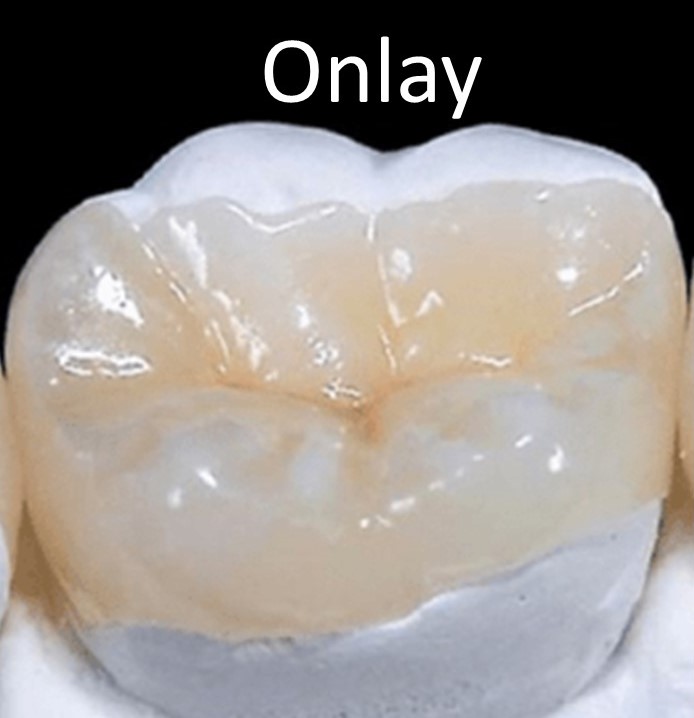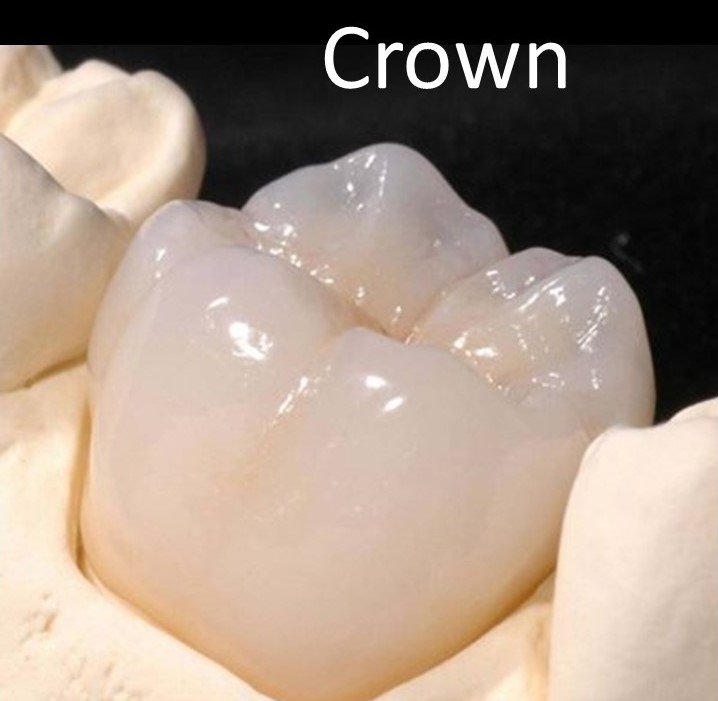
Typically, we make onlays or crowns when a tooth has been broken down so badly that it cannot accept a filling anymore. For example, if more than 60 % of the tooth is lost, it is unlikely that any filling is going to stay in place. Additionally, sometimes teeth have cracks, or they have root canal treatments done, which makes them more brittle. They therefore require some form of a protection to ensure that they don’t split. Protection traditionally has always come in the form of a crown.

The process for making a crown begins with trimming the tooth down into a cone. The crown itself is fabricated in a lab, out of gold, porcelain or some kind of a fusion of the two. At another appointment, the crown is then cemented over the tooth. Nowadays, because of advances in dental materials, we are able to chemically bond to the tooth instead of needing a mechanical lock. This means that we don’t have to remove as much tooth structure. We can be more conservative, preserving the amount of enamel and dentin that you have, and avoiding heavy restorations. Onlays are a great way to achieve this. Onlays can be made of gold, but are more often made of ceramic for esthetic reasons. The greatest advantage of doing an onlay versus a crown is that we get to preserve as much of your tooth as we can, while still providing it the protection that it needs.
So, the bottom line? Compared to a crown, an onlay is a less aggressive restoration (when one can be performed), as less tooth structure needs to be removed in order to place it. The costs are similar. As such, with all things equal, an onlay is the preferred restoration when possible.

